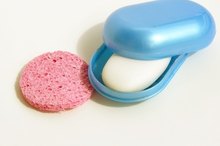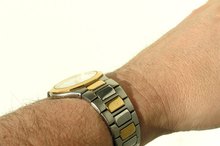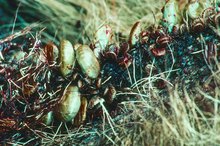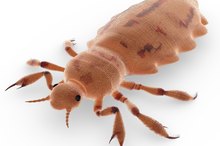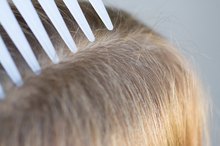How to Treat Sea Lice Bites
How to Treat Sea Lice Bites. Sea lice bites are a common occurrence for those who swim in the Caribbean Ocean, the Gulf of Mexico and the waters off the coast of the Eastern and Western United States. Sea lice are tiny jellyfish larvae with stinging cells. Their bites usually appear underneath your bathing suit as a red rash with tiny blisters. Learn to treat sea lice bites and alleviate their associated symptoms.
Reduce the itching associated with sea lice bites with household kitchen products such as vinegar and meat tenderizer. Shake meat tenderizer over the reddened area and then pour vinegar over it. Repeat the process until the itching sensation subsides.
How to Stop Flea Bites from Itching
Learn More
Try over-the-counter topical products. Ointments with hydro-cortisone help reduce redness and itching. Apply the ointment to the sea lice bites according to the package instructions.
Take over-the-counter oral medication. Oral antihistamines such as Benydryl reduce redness and itching. Take according to package instructions.
The Signs and Symptoms of Flea Bite Allergies in Humans
Learn More
Apply over-the-counter antibiotic ointments. Topical antibiotic ointments reduce the chances of secondary infections caused by sea lice bites. Use according to the package instructions.
Visit your doctor if symptoms persist. Sea lice bites can last for as little as 2 days or as long as 2 weeks. Rashes that last longer may indicate a secondary infection.
Tips
If you suspect you have sea lice bites while you are swimming in the ocean, get out of the water, remove your bathing suit and shower immediately. Do not use that bathing suit again unit it has been machine washed and dried completely.
Warnings
Some people experience extreme allergic reactions to sea lice bites. Some symptoms of an allergic reaction include headache, fever, chills, nausea and vomiting. Seek immediate medical help if you experience any of these symptoms.
Related Articles
References
- InformedHealth.org [Internet]. Cologne, Germany: Institute for Quality and Efficiency in Health Care (IQWiG); 2006-. Head lice: Overview. 2008 Mar 5 [Updated 2018 Dec 13].Available from: https://www.ncbi.nlm.nih.gov/books/NBK279329/
- Rassami W, Soonwera M. Epidemiology of pediculosis capitis among schoolchildren in the eastern area of Bangkok, Thailand. Asian Pac J Trop Biomed. 2012;2(11):901–904. doi:10.1016/S2221-1691(12)60250-0
- van der Wouden JC, Klootwijk T, Le Cleach L, et al. Interventions for treating head lice. Cochrane Database Syst Rev. 2018;2018(5):CD009321. Published 2018 May 22. doi:10.1002/14651858.CD009321.pub2
- Bin Saif GA, Ericson ME, Yosipovitch G. The itchy scalp--scratching for an explanation. Exp Dermatol. 2011;20(12):959–968. doi:10.1111/j.1600-0625.2011.01389.x
- Head lice infestations: A clinical update. Paediatr Child Health. 2004;9(9):647–657. doi:10.1093/pch/9.9.647
- Izri A, Chosidow O. Efficacy of machine laundering to eradicate head lice: recommendations to decontaminate washable clothes, linens, and fomites. Clin Infect Dis. 2006;42(2):e9–e10. doi:10.1086/499105
- Değerli S, Malatyalı E, Mumcuoğlu KY. Head lice prevalence and associated factors in two boarding schools in Sivas. Turkiye Parazitol Derg. 2013;37(1):32–35. doi:10.5152/tpd.2013.08
- Greive KA, Barnes TM. In vitro comparison of four treatments which discourage infestation by head lice. Parasitol Res. 2012;110(5):1695–1699. doi:10.1007/s00436-011-2687-7
- Devore CD, Schutze GE. Head lice. Pediatrics. 2015;135(5):e1355-65.
- Devore CD, Schutze GE; Council on School Health and Committee on Infectious Diseases, American Academy of Pediatrics. Head lice. Pediatrics. 2015 May;135(5):e1355-65. doi:10.1542/peds.2015-0746
Tips
- If you suspect you have sea lice bites while you are swimming in the ocean, get out of the water, remove your bathing suit and shower immediately. Do not use that bathing suit again unit it has been machine washed and dried completely.
Warnings
- Some people experience extreme allergic reactions to sea lice bites. Some symptoms of an allergic reaction include headache, fever, chills, nausea and vomiting. Seek immediate medical help if you experience any of these symptoms.
Writer Bio
This article was written by the CareerTrend team, copy edited and fact checked through a multi-point auditing system, in efforts to ensure our readers only receive the best information. To submit your questions or ideas, or to simply learn more about CareerTrend, contact us [here](http://careertrend.com/about-us).
